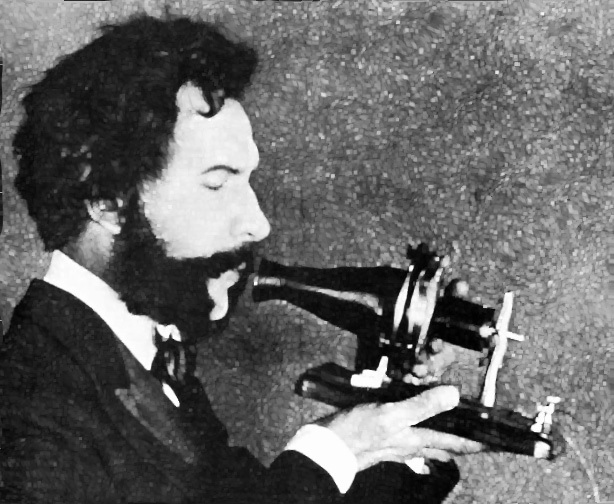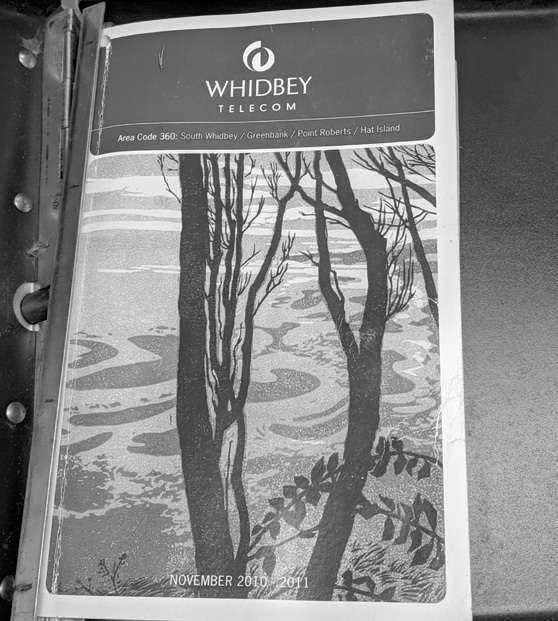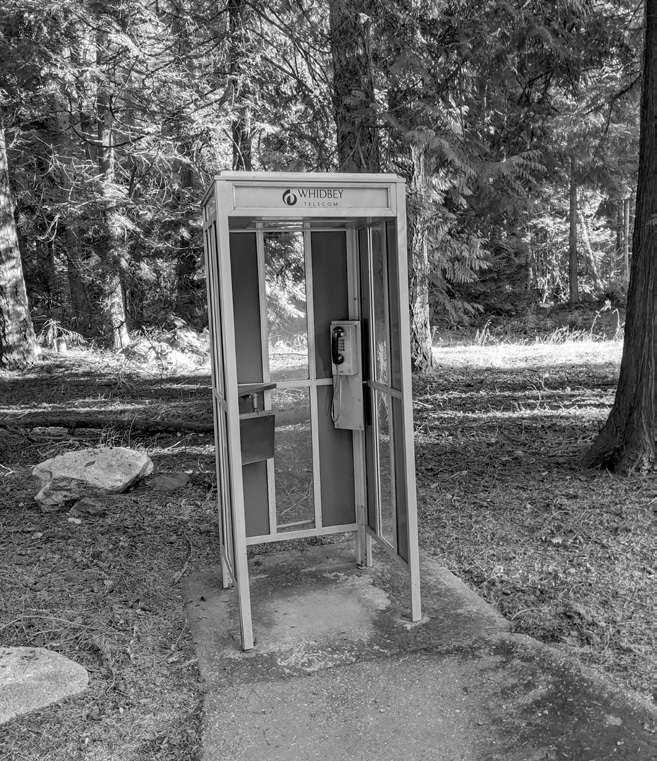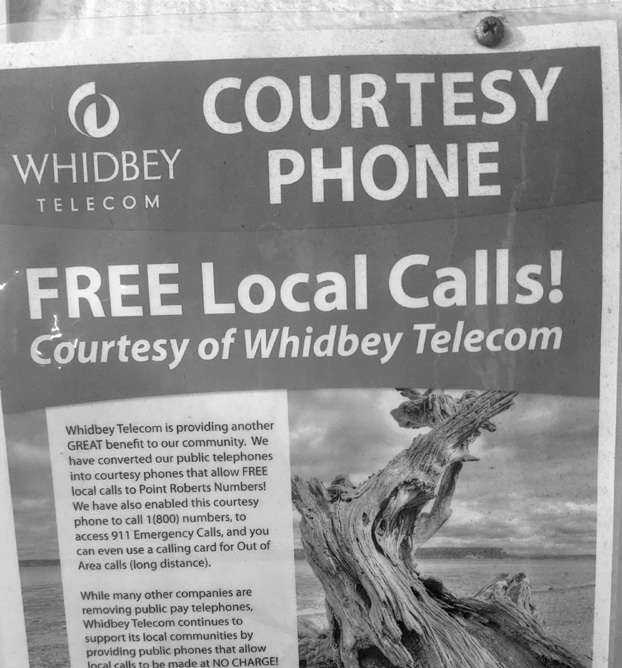Telecom Informer
by The Prophet
Hello, and greetings from the Central Office! I'm writing to you from a peninsula, surrounded by water on three sides, where Canadian dollars are used, gasoline is sold in liters, the B.C. ferry to Vancouver Island is a stone's throw away, and it's approximately 20 minutes to Vancouver International Airport or 30 minutes to downtown Vancouver. If you had to guess where you were located, you'd probably assume the Lower Mainland of British Columbia, right? And yet, somehow, this place is part of the United States, leading to one of the strangest telecommunications landscapes in North America.
Point Roberts, depending upon whom you ask, is either an accident of geography or a deliberate construction. When the U.S. and Canada drew the border in these parts, it was drawn along the 49th parallel. This included Point Roberts, five square miles of pene-exclave, surrounded on three sides by water and one side by Canada. It's completely cut off from the rest of the United States, and the only access is by boat, small plane or by traveling through Canada (which is currently limited to essential travel only). While there was a bustling fishing and canning industry around the turn of the 20th century, it's long gone. These days, the economy consists mostly of receiving packages from U.S. online retailers for Canadian customers, as well as selling gas and groceries that are considerably cheaper than in Canada.
Owing to the unique geography, Point Roberts is dependent upon its neighbors for a considerable amount of its infrastructure (for example, power is supplied by B.C. Hydro and marketed by Puget Sound Energy (PSE), while water is supplied by Metro Vancouver). Essentially everything coming into or out of Point Roberts transits Canada. Accordingly, "Point Bob," as the locals call it, has been treated as a practical appendage of the Vancouver area. This dependency has, however, been gradually reduced over time in the telecommunications space.
Until 1988, Point Roberts residents were served by BC Tel and had phone numbers in the 604 area code. The 945 exchange was particularly unique because it was also reserved in the 206 area code, which served all of western Washington, just in case a U.S. local exchange carrier ever wanted to serve Point Roberts (given that Point Roberts is in the United States, FCC rules allowed a U.S. carrier to displace BC Tel upon application). Ironically, this wasn't an economic proposition until after the breakup of the Bell System, which unlocked federal subsidies for independent local exchange carriers. Whidbey Telephone applied for, and was granted, the right to serve Point Roberts despite considerable local opposition from residents who were accustomed to calling their neighbors for free, rather than paying international long distance rates.
These days, Whidbey Telephone is still the local exchange carrier, as well as the only local Internet provider. They run an aging and moribund copper network which they're allegedly upgrading to fiber, except - predictably - they only plan to put this in if they get a massive subsidy from the Department of Agriculture. Internet access theoretically tops out at 30 Mbps at $70 per month, but in practice, most places don't achieve these speeds, and Point Roberts has some of the lowest Internet speeds in the state based on a state Utilities and Transportation Commission survey.
While a demonstration fiber network is in place (with high speeds to the community center), it will be rolled out no earlier than 2025, provided that federal subsidies are provided. Whidbey Telephone, like many independent LECs, for the most part only invests federal money in its network, and federal subsidies are (like most things in the U.S.) unreliable at best. To Whidbey Telephone's credit, however, they do offer two public phones with free unlimited local calls (one at the marina, and the other in a phone booth outside their office).
Until mid-2019, Eastlink provided cable TV service from their office in British Columbia. This was a holdover from when Delta Cable, a local family-owned Canadian company, operated cable services. However, Eastlink didn't invest in upgrading the network in Point Roberts, given the lack of assurances from the FCC that they would be allowed to continue providing any service at all, much less permitted to offer services such as high-speed Internet access, which would justify the investment. Eventually, the costs of operating the service became too great and they abandoned the entirety of their cable plant, which is still in place, but is now unmaintained.
The Whidbey Telephone stranglehold over phone service lasted forever because of the rapid development of mobile phone technology. Canadian carriers provide excellent wireless phone coverage across the entire Point. Accordingly, most residents carry Canadian mobile phones, which allow them toll-free calling to the Vancouver area (no thanks to Whidbey Telephone). U.S. mobile carriers, meanwhile, have largely ignored Point Roberts. Only Verizon offers service, and they operate only a single tower next door to the fire hall which offers limited coverage. The service seems more as though it's designed to limit U.S. roaming for their own subscribers visiting Point Roberts than to provide much local coverage.
For higher speed Internet service, Starlink satellite-based (currently in beta) is one possible option. They offer service of up to 100 Mbps and the beta service is reasonably reliable because Point Roberts is in one of the few global locations with uninterrupted coverage. The downside is the cost: at $99 a month, this is not a cheap connectivity option. Another community-based option is being floated by a local group of entrepreneurs doing business as PointNet with service planned for this summer.
Despite local opposition to tower construction (like pretty much everywhere else in the U.S., 5G conspiracy theories abound on Point Roberts), they have received the requisite approvals and plan to operate a 50 Mbps symmetrical 4G fixed wireless service, operating over CBRS bands. Trunking will be back to the U.S. mainland (bypassing Whidbey Telephone and gaining access to a major fiber corridor) via high-speed fixed wireless.
And with that, it's time for me to prepare my paperwork for the Canadian border so I can - hopefully - leave. Only "essential" trips (such as those related to telecommunications work) are currently permitted, and there is no guarantee that once arriving here, you'll be permitted to return to the U.S. mainland. I'll be sorry to go, though. It really is beautiful here. You can watch whales from the beach. Deer wander the neighborhoods. The skies are soaring with eagles and great blue herons. You'd never guess that just a few miles away, there is a dense urban region with nearly three million people.
Although many of us are stuck inside far more than we'd like to be, rest assured that the everyday heroes of telecom are working hard to keep you connected. That is, just as soon as I finish my lunch, and maybe a nap after that. Stay safe this winter, and I'll see you again in the Spring!




